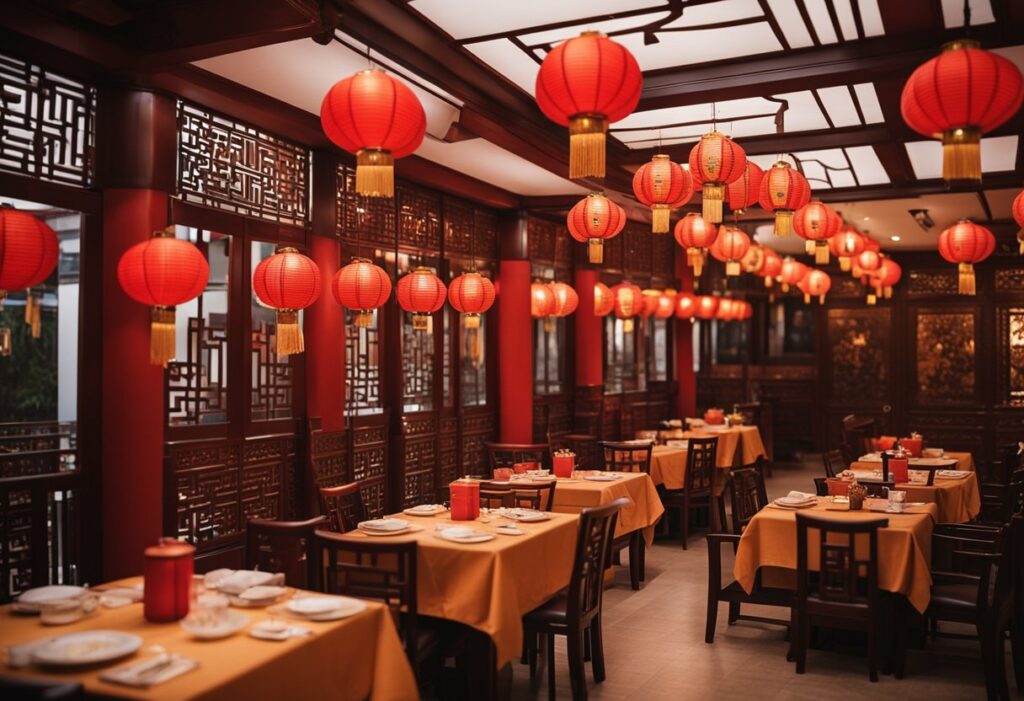Chinese Interior Design Restaurant: A Fusion of Tradition and Modernity
If you’re looking for a unique dining experience, Chinese interior design restaurants are a must-try. These restaurants are known for their attention to detail, from the decor to the lighting, creating an atmosphere that transports you to China. Chinese interior design restaurants offer a dining experience that is not only delicious but also culturally significant.
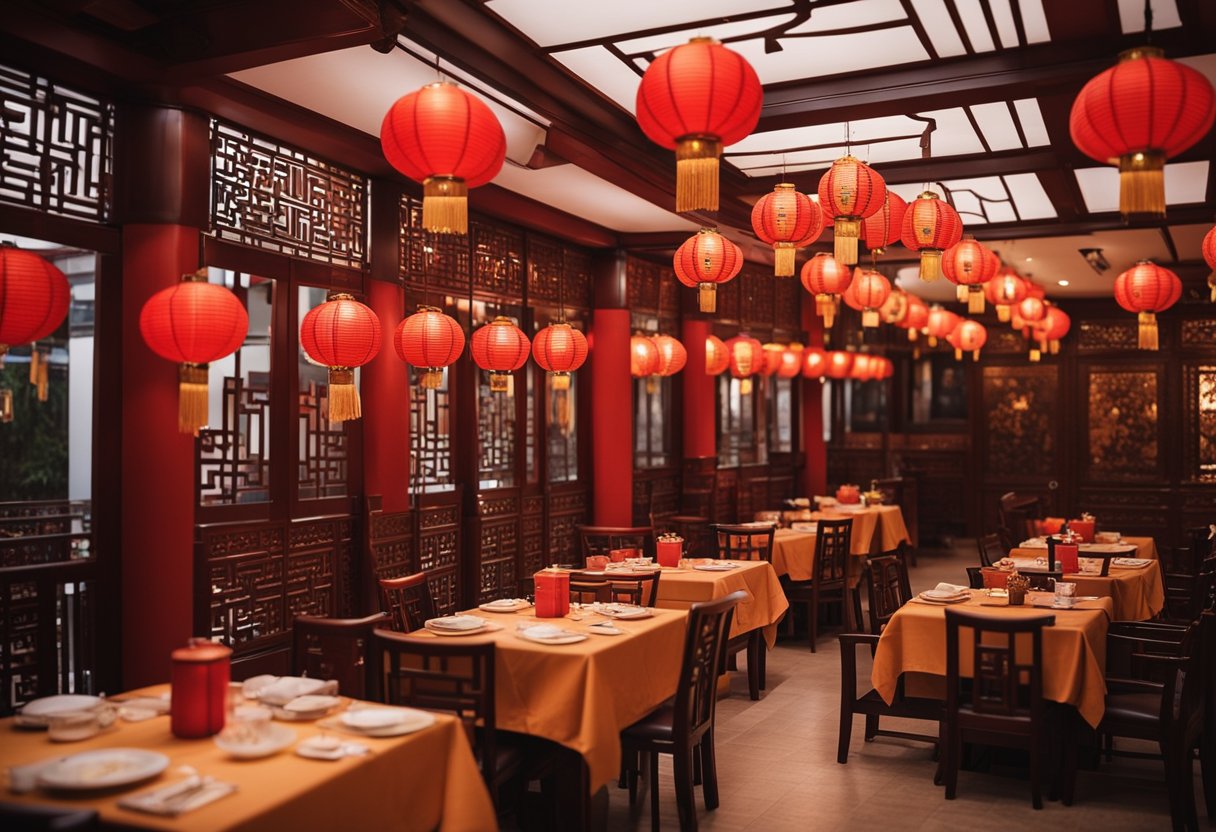
One of the key design elements of Chinese interior design restaurants is the use of red and gold colours. These colours are considered lucky in Chinese culture and are often used in traditional Chinese architecture. The lighting is also an important aspect of Chinese interior design, with dimmer lighting creating a more intimate atmosphere. The decor is often inspired by traditional Chinese art and culture, with intricate designs and patterns adorning the walls and furniture.
The cultural significance of Chinese interior design restaurants cannot be overstated. Dining in these restaurants is not just about the food, but also about the experience. From the decor to the music, every aspect of the restaurant is designed to transport you to China and immerse you in the culture. Whether you’re a foodie or a culture enthusiast, a visit to a Chinese interior design restaurant is a must.
Key Takeaways
- Chinese interior design restaurants offer a unique dining experience that transports you to China.
- The use of red and gold colours, dimmer lighting, and traditional Chinese decor are key design elements of these restaurants.
- Dining in a Chinese interior design restaurant is not just about the food, but also about the cultural experience.
Design Elements and Aesthetics
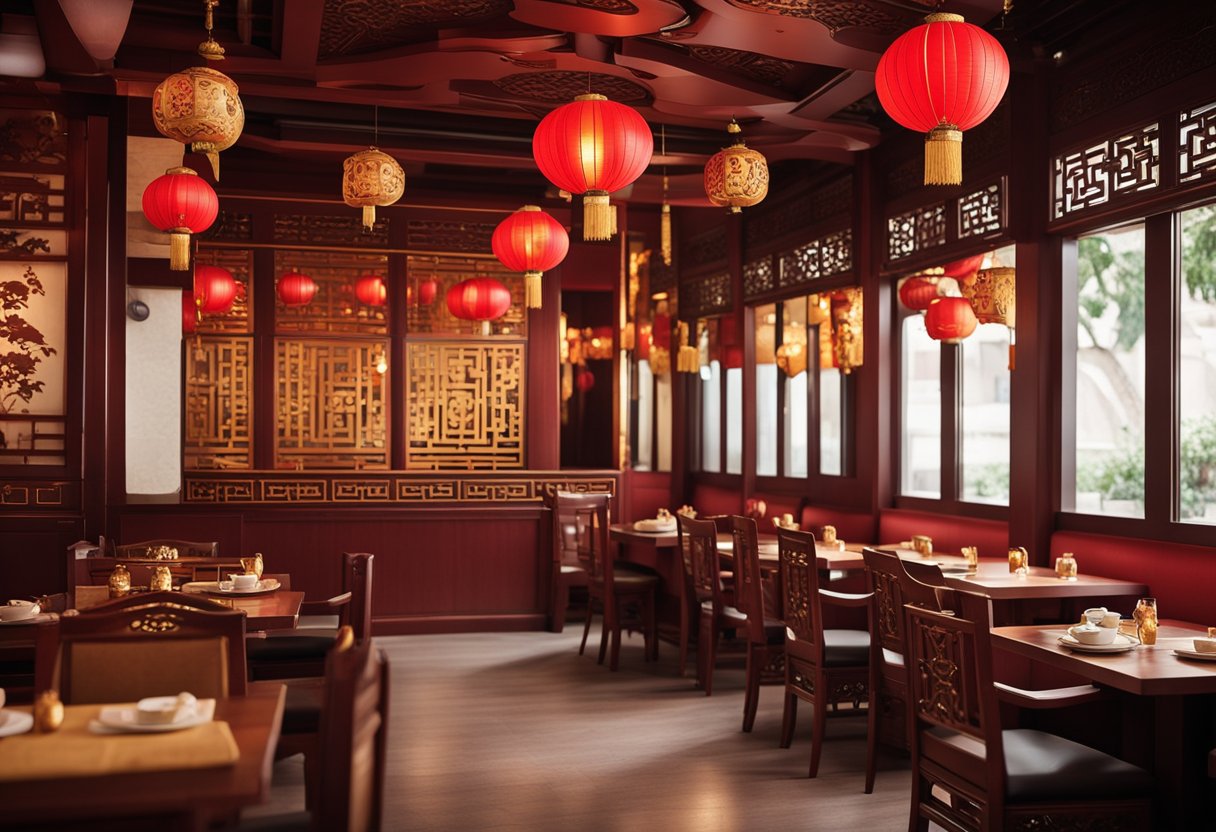
When it comes to designing a Chinese restaurant, there are several key elements that you need to consider. From the colour scheme to the furniture layout, every aspect of the design should work together to create an atmosphere that is both elegant and peaceful.
Colour and Texture Harmony
The colour scheme of a Chinese restaurant is often centred around red, gold, black, and white. These colours are commonly associated with wealth, prosperity, and good luck in Chinese culture. Bamboo is also a popular material used in Chinese interior design, as it represents simplicity and elegance.
Texture is also an important aspect of Chinese restaurant design. Textured walls, carved wooden panels, and decorative screens can add a sense of depth and richness to the space.
Lighting and Ambience
Lighting plays a crucial role in creating the right atmosphere in a Chinese restaurant. Soft, warm lighting can create a sense of intimacy and relaxation, while brighter lighting can make the space feel more energetic and lively. Chinese lanterns are a popular choice for lighting fixtures, as they add a traditional touch and create a warm, inviting glow.
Furniture and Layout
The furniture layout of a Chinese restaurant should be carefully considered to create a comfortable and welcoming space. Traditional Chinese seating, such as low tables and floor cushions, can add a sense of authenticity to the design. Dragon motifs and other Chinese artwork can also be incorporated into the furniture design to add a touch of luxury and elegance.
Overall, the design elements and aesthetics of a Chinese restaurant should work together to create an atmosphere that is both authentic and inviting. From the colour scheme to the furniture layout, every aspect of the design should be carefully considered to create a space that is both beautiful and functional.
Cultural Significance and Experience
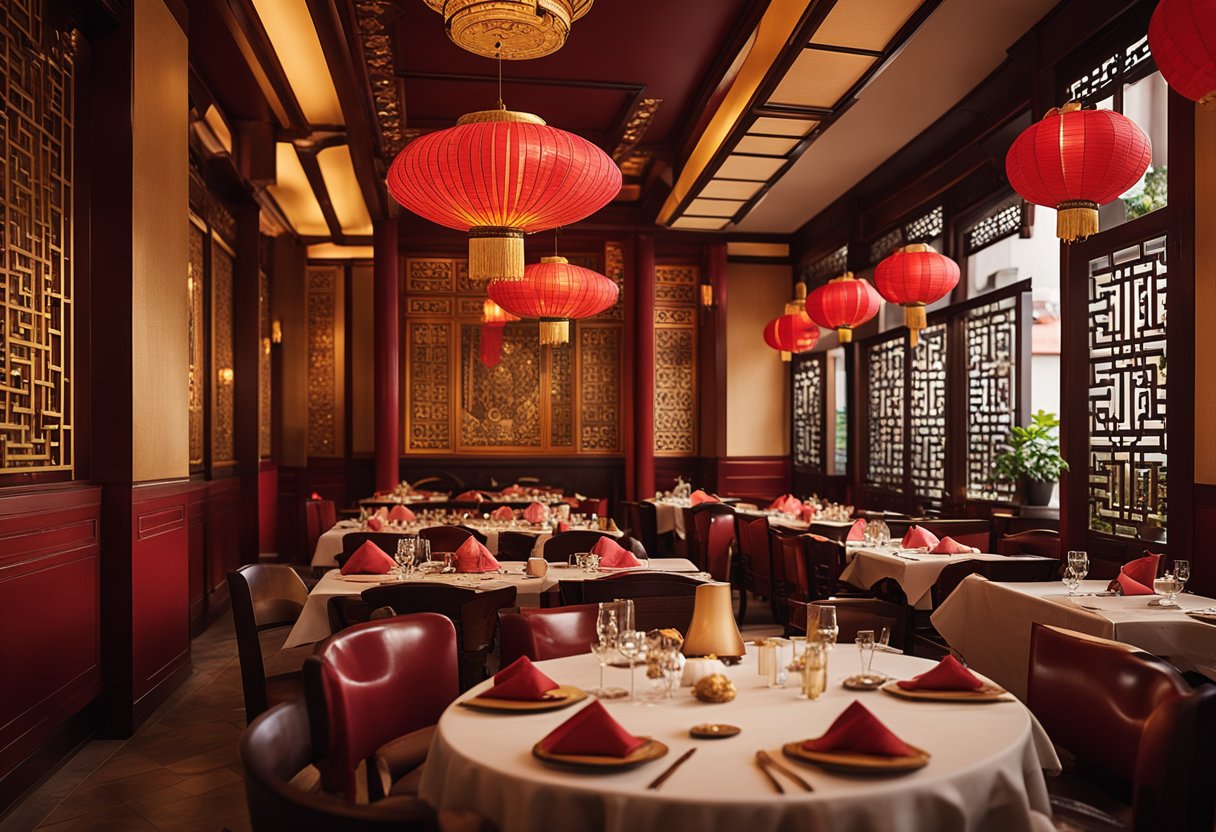
If you’re looking to create an authentic Chinese dining experience, it’s important to incorporate traditional motifs and cultural elements into your restaurant design. This will not only create a visually stunning atmosphere, but it will also add to the overall dining experience.
Incorporating Traditional Motifs
One way to incorporate traditional motifs is to use traditional Chinese artwork, such as scrolls or inlaid tables. This will not only add to the aesthetic of the restaurant, but it will also showcase the rich cultural heritage of China. Additionally, you can use traditional Chinese furniture to create a more authentic ambiance. This will include chairs and tables, which are often made of wood and feature intricate carvings.
Creating a Memorable Dining Atmosphere
To create a memorable dining atmosphere, it’s important to consider the ceiling and lighting. You can use a variety of lighting techniques to create a warm and inviting ambiance. For example, you can use soft lighting to create a relaxing atmosphere, or bright lighting to showcase certain elements of the restaurant.
Another important aspect of creating a memorable dining atmosphere is to consider the private space and seating capacity. This will ensure that your guests are comfortable and have enough space to enjoy their meal. You can also use a variety of mid-century design elements to create a unique and modern atmosphere.
Overall, creating an authentic Chinese style restaurant requires a careful consideration of the cultural significance and experience. By incorporating traditional motifs, creating a memorable dining atmosphere, and using the right restaurant furniture, you can create a fine dining experience that will stand out from the competition. Additionally, you can also consider using music to add to the overall ambiance of the restaurant.
Frequently Asked Questions
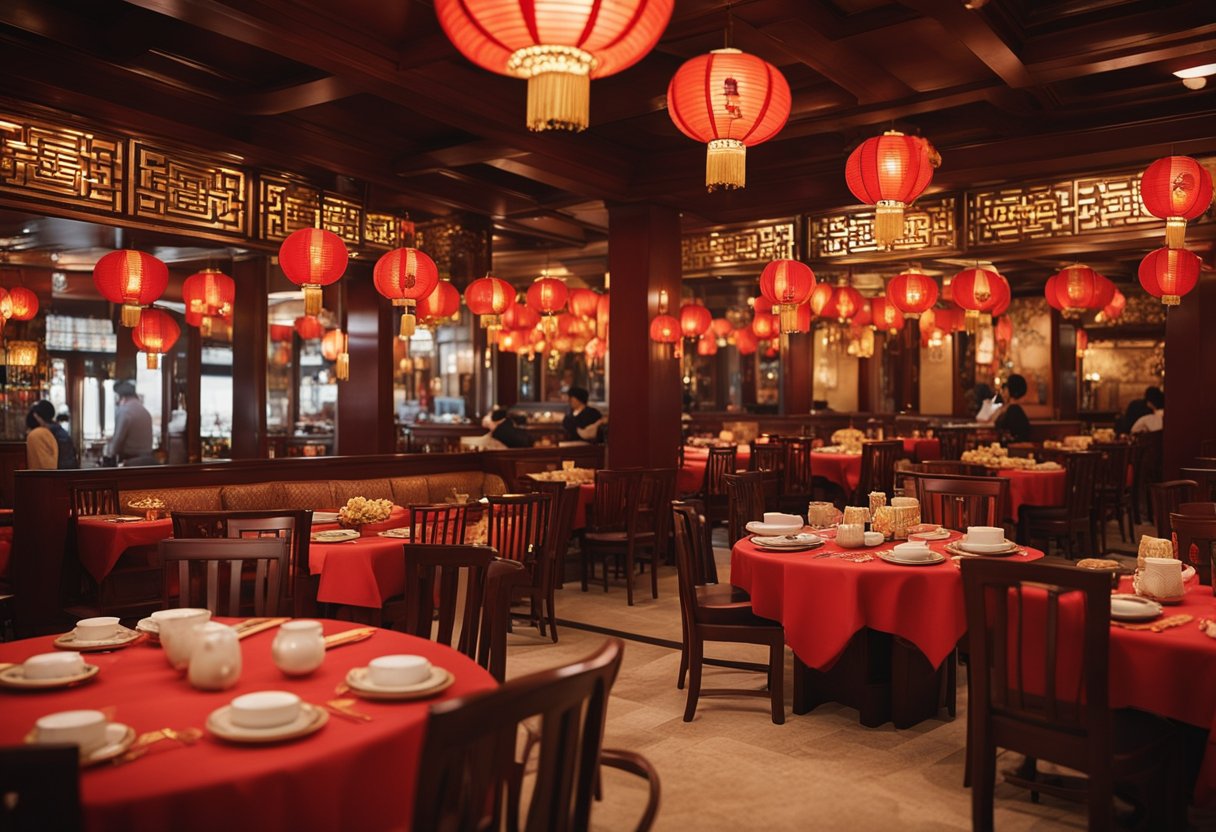
What are the latest trends in modern Chinese restaurant interiors?
Modern Chinese restaurant interiors are all about creating a fusion of traditional Chinese elements with contemporary design. The latest trends include incorporating natural materials such as wood, stone and bamboo, using bold colours and patterns, and incorporating Chinese motifs such as dragons, lanterns and calligraphy. Lighting plays a key role in creating a warm and inviting atmosphere.
How can small spaces be maximised in a Chinese restaurant design?
Small spaces can be maximised in a Chinese restaurant design by using clever storage solutions, such as built-in seating with storage underneath, and by using multi-functional furniture. Mirrors and glass can be used to create the illusion of space, while clever lighting can help to create a cosy and intimate atmosphere.
Could you suggest some innovative Chinese restaurant wall decor ideas?
Innovative Chinese restaurant wall decor ideas include using traditional Chinese artwork such as calligraphy, silk paintings and porcelain, as well as incorporating modern elements such as graffiti and street art. Textured walls, such as brick or stone, can add depth and interest to a space, while wallpaper featuring Chinese motifs can add a touch of elegance.
What elements are essential to creating an authentic Chinese restaurant atmosphere?
To create an authentic Chinese restaurant atmosphere, it is important to incorporate traditional Chinese elements such as lanterns, dragons, and calligraphy. The use of natural materials such as wood, bamboo and stone is also essential, as is the use of bold colours such as red and gold. Lighting plays a key role in creating a warm and inviting atmosphere.
What are some unique concepts for Chinese restaurant exteriors?
Unique concepts for Chinese restaurant exteriors include incorporating traditional Chinese architectural elements such as pagodas, courtyards, and gardens. Water features such as fountains, ponds, and streams can add a calming and tranquil element to the exterior, while lighting can be used to highlight architectural features and create a warm and inviting atmosphere.
What design principles should be considered for an effective Chinese restaurant layout?
An effective Chinese restaurant layout should be designed to create a sense of flow and harmony, with a clear distinction between the front of house and back of house areas. The use of natural materials such as wood, bamboo and stone is important, as is the use of bold colours and traditional Chinese motifs. Lighting should be used to create a warm and inviting atmosphere, with a focus on highlighting key features such as artwork and architectural elements.

